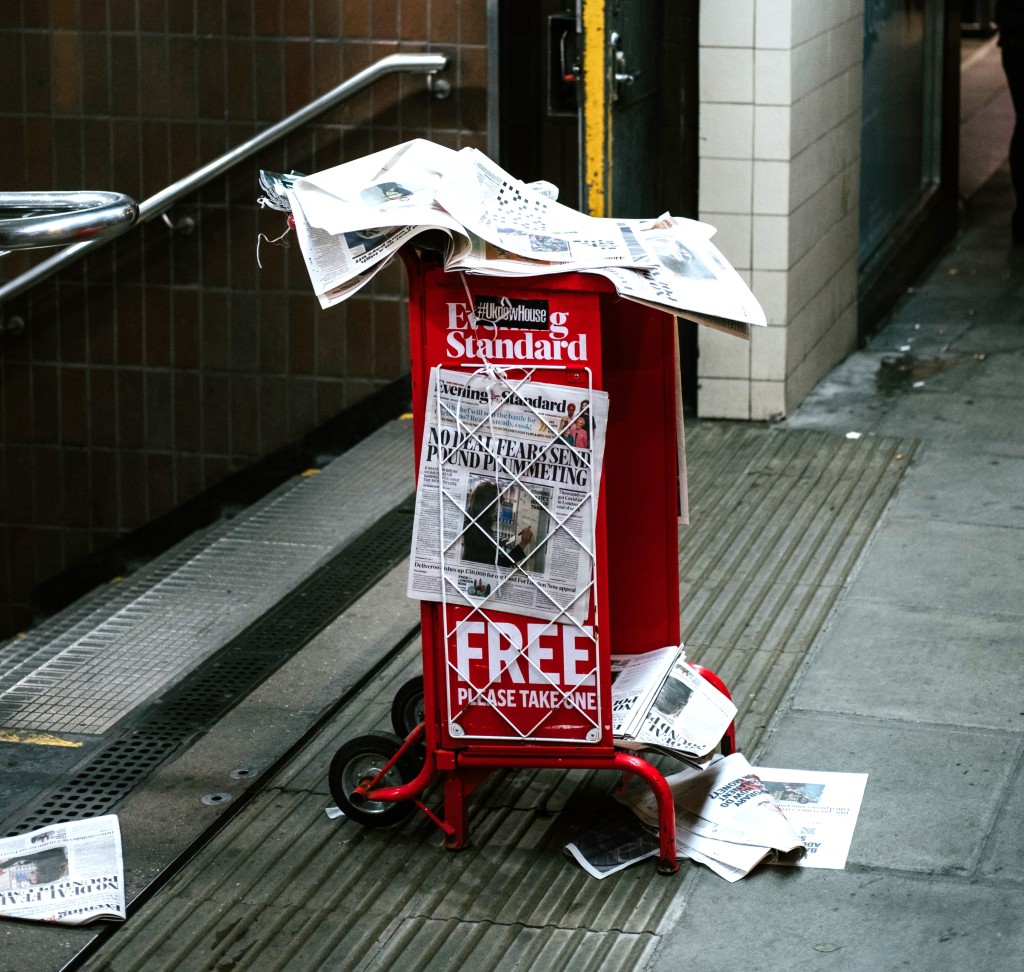
What are the stories that shape us? Can we tell truth from fiction?
What makes an event newsworthy? Where do we get our news?
Can the news ever be objective? What does a “free” press mean?
All these questions and more are explored in a fascinating exhibition at the British Library which is running until 21 August. In today’s world we access our news instantly from many different sources and a variety of formats. Long gone in the UK are the days when the BBC was the only television news provider and the newsmen (always men) presented the news wearing bow ties and dinner jackets! Now news is hotly debated and “facts” are challenged and argued over, depending on your viewpoint or political affiliation.
This exhibition traces 500 years of news stories, illustrating the development of the news reporting we see today. The earliest surviving printed news report is of the Battle of Flodden, between the English and the Scots in 1513; partisan news pamphlets proliferated during the Civil War in the 1640s, while the London Gazette was one of the earliest papers to use on-the-spot reporting in 1666 of the Great Fire of London. With resonances of today’s conflicts it is significant that the first war correspondent to report from the front line, reported the Charge of the Light Brigade in Crimea in 1854.
The use of news media to influence public opinion is nothing new. It was harnessed very effectively by the Anti-slavery lobby as far back as 1788, when the freed slave, Oludah Equiano, wrote vividly in the press about his personal experiences, helping the abolition cause.. Similarly video footage of the Ethiopian famine rocked the world in 1984, while the Black Lives Matter movement gained widespread attention from Instagram posts, demonstrating the power of the hashtag to change the news.
Sensational stories are nothing new, as also are those that are complete fabrications. There is an entertaining piece of reporting of a woman who gave birth to rabbits, and who managed to fool the public and medics (including the King’s doctor)for several months in 1726. Needless to say, the hoax ruined the reputation of several eminent physicians.
Whilst we can smile at the gullibility of our forebears, are we any less gullible? How do we test the veracity of what we read or hear and who do we trust? Unsurprisingly both Putin and Trump feature in the exhibition, as it is bang up to date in addressing current issues such as the war in Ukraine and the assault on the US Capitol.
We pride ourselves on having a “Free” press in Britain, grounded in public interest and transparency, but do powerful media owners exert too much influence and what of their agendas? Do they sway elections and what of foreign interference?
You can see that the exhibition as well as being entertaining, prompts many more questions than it answers. I was challenged to consider what is truth? And this reminded me of Jesus’ words in John chapter 8: “You will know the truth and the truth will set you free.” It’s too deep a question to explore here, but hopefully may prompt a sermon from Giles!
Liz Clarson
Catch up on the Environment and Social Justice Committee here.
